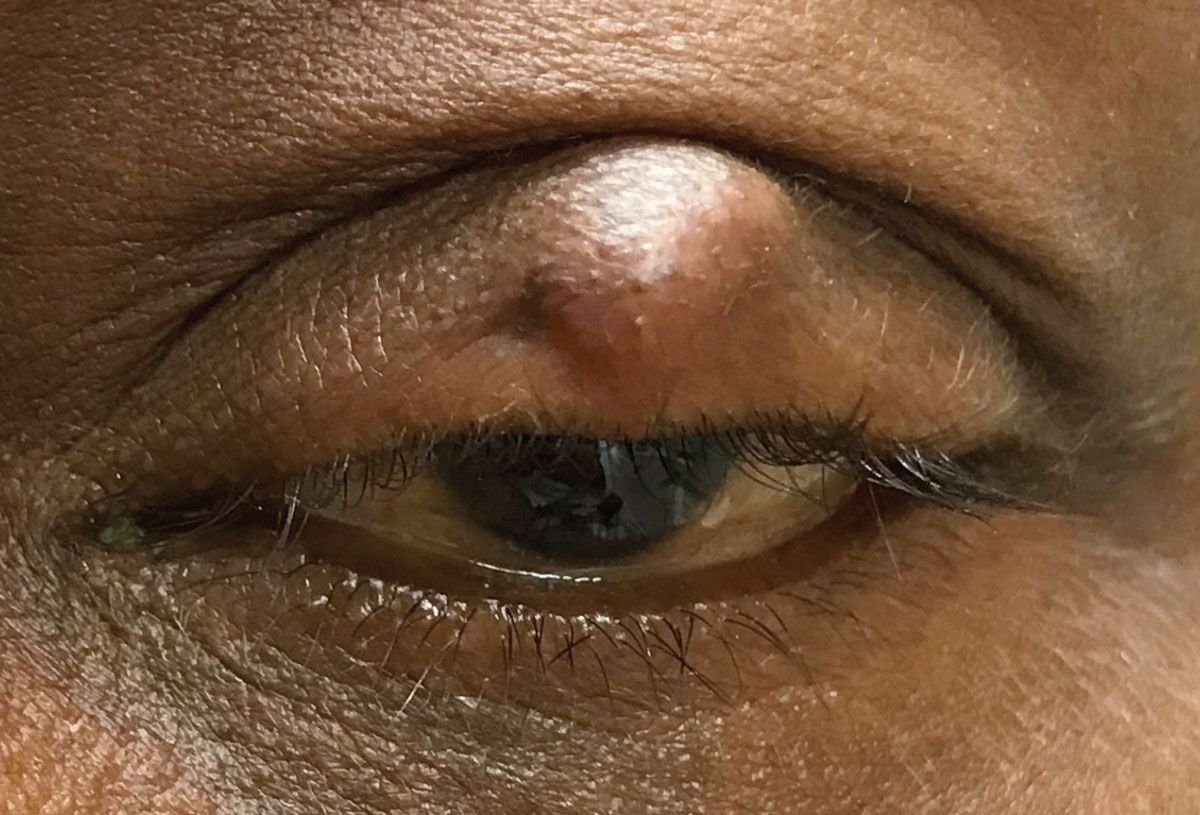 |
Non-Caucasian individuals were found to develop chalazion, and require surgical excision, more often than white patients. Photo: Joseph Sowka, OD. Click image to enlarge. |
The number of chalazia cases are rising, but few studies have been conducted identifying demographic factors, medical comorbidities and surgical risk factors. In this study, researchers evaluated factors associated with chalazion diagnosis and surgical excision.
Nearly 135,000 patients with chalazion diagnosis from 2002 to 2019 were compared at a ratio of 1:5 with controls; 13% underwent subsequent surgical excision. Risk factors for diagnosis included female sex, non-Caucasian race, northeast location, conditions affecting periocular skin and tear film, non-ocular inflammatory conditions and smoking. Diabetes and systemic sclerosis diagnoses decreased odds of diagnosis. Male sex, rosacea, Black and Hispanic race, antibiotic use and doxycycline use increased odds of surgery.
“First, our study found that patients with increased age may have decreased likelihood of diagnosis—this may be explained by decreasing sebum excretion with age,” the authors explained in their paper for the journal Ophthalmic Epidemiology.
A higher prevalence rate of chalazion diagnosis was found in females, in patients with income greater than $40,000 and in adults with education beyond a high school level, which was consistent with previous studies and may be a consequence of these groups presenting earlier for treatment, the authors noted.
“Those with higher incomes are more likely to have surgical removal of an issue that those with less affluence may attempt to live with,” they authors explained.
Patients from the Northeast, South Atlantic, Southern Midwest and Pacific regions had more chalazion diagnoses compared with those from the Mountain region. “The highest odds of diagnosis and lowest odds of surgical intervention for chalazion were seen in the Northeast division, which may be related to increased access to eye care and earlier treatment,” the authors wrote. “Decreased geographic distance to an eyecare provider may also contribute to increased odds of chalazion diagnosis in the Northeast division seen in our study.”
Ocular and medical comorbidities including rosacea, blepharitis, meibomian gland dysfunction, gastritis, anxiety, inflammatory bowel disease, smoking and seborrheic keratosis were found as risk factors for diagnosis of chalazion, all of which were consistent with prior studies.
Rosacea was the only condition that led to higher odds of both chalazion diagnosis and surgical intervention. “This may suggest that chalazia arising in setting of rosacea may be more refractory to conservative medical treatments,” the authors noted in their article. “Our findings that rosacea is associated with both diagnosis and surgical management of chalazia highlight the importance of early diagnosis and control of rosacea as a potential key component in the management of chalazion.
“Furthermore, the results of this study suggest early recognition and treatment of concomitant rosacea may serve an important role in the management of chalazion and in the prevention of surgical intervention.”
Kim DH, Briceno CA, McGeehan B, VanderBeek BL. Risk factors for chalazion diagnosis and subsequent surgical excision. Ophthalmic Epidemiol. April 9, 2023. [Epub ahead of print.] |


